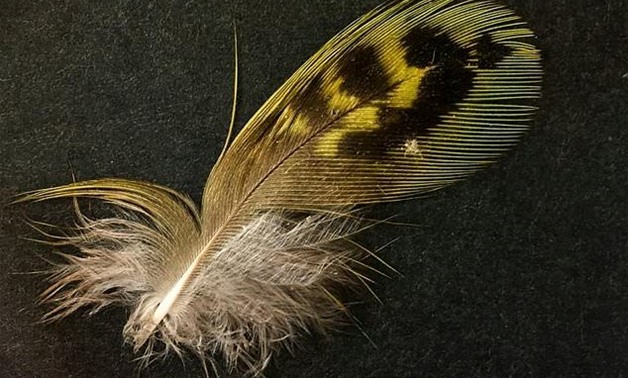
The freshness of the zebra finch nest where the night parrot feather was found indicates it may have been collected 'within a few hundred metres in the past few weeks', said expert John Young -AFP
A feather from one of the most elusive birds in the world has been found in South Australia, the first proof in more than a century that it lives there, wildlife experts said Thursday.
The "night parrot" ranks among the world's rarest avian species and was thought extinct until an intrepid Australian naturalist provided photo evidence of one in Queensland state in 2013.
It has since also been spotted in Western Australia.
The expert behind the Queensland sighting, John Young, and fellow ecologist Keith Bellchambers from the Australian Wildlife Conservancy have now shown it is also in South Australia.
The pair found a feather from the small, yellowish-green bird in the nest of a zebra finch around remote Lake Eyre while following up on blurry images from a camera trap in the area.
"Keith and I looked at many zebra finches' nests before finally an unmistakable small green feather appeared within the fresh base lining of one of the nests," said Young.
"People show excitement in many different ways, mine was to shake uncontrollably with numbing excitement and Keith's was sheer disbelief with his hands holding his head. An incredibly emotional time for both of us.
"In my eyes there was no doubt that this was the feather of a night parrot."
The freshness of the zebra finch nest indicates the feather may have been collected "within a few hundred metres in the past few weeks", Young added.
The curator of ornithology at the Western Australian Museum confirmed their find.
The next step is to map the distribution of the species, which was last recorded at Lake Eyre in 1883, and assess the population size using song meters and camera traps, said Young.
Researchers feared for decades that the nocturnal, desert-dwelling parrot was extinct, with no sightings between 1912 and 1979 and only a handful since, before the conclusive evidence in 2013.
In 2012, the Smithsonian Magazine rated it at number one among the world's five most mysterious birds.
Endemic to Australia, it is listed as endangered by the International Union for the Conservation of Nature, which estimates there are about 50-250 in the wild and declining.

Comments
Leave a Comment